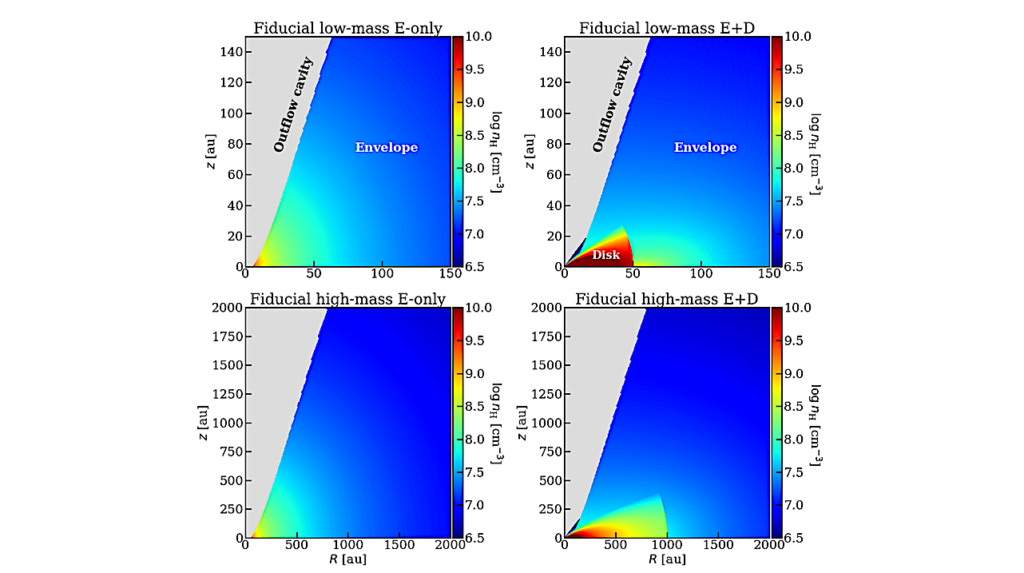Connecting Planet Formation And Astrochemistry: A Main Sequence For C/O in Hot-exoplanetary Atmospheres

To understand the role that planet formation history has on the observable atmospheric carbon-to-oxygen ratio (C/O) we have produced a population of astrochemically evolving protoplanetary disks.
Based on the parameters used in a pre-computed population of growing planets their combination allows us to trace the molecular abundances of the gas that is being collected into planetary atmospheres. We include atmospheric pollution of incoming (icy) planetesimals as well as the effect of refractory carbon erosion noted to exist in our own solar system.
We find that the carbon and oxygen content of Neptune-mass planets are determined primarily through solid accretion and result in more oxygen-rich (by roughly two orders of magnitude) atmospheres than Hot-Jupiters, whose C/O are primarily determined by gas accretion. Generally we find a `main-sequence’ between the fraction of planetary mass accreted through solid accretion and the resulting atmospheric C/O – with planets of higher solid accretion fraction having lower C/O. Hot-Jupiters whose atmospheres have been chemically characterized agree well with our population of planets, and our results suggest that Hot Jupiter formation typically begins near the water ice line.
Lower mass hot-Neptunes are observed to be much more carbon-rich (with 0.33 ≲ C/O ≲ 1) than is found in our models (C/O ∼10−2), and suggest that some form of chemical processing may affect their observed C/O over the few Gyrs between formation and observation. Our population reproduces the general mass-metallicity trend of the solar system and qualitatively reproduces the C/O-metallicity anti-correlation that has been inferred for the population of characterized exoplanetary atmospheres.
Alex J. Cridland, Ewine F. van Dishoeck, Matthew Alessi, Ralph E. Pudritz
(Submitted on 29 Oct 2019)
Comments: Resubmitted to A&A after the second round of referee comments, 20 pages, 13 figures, 3 tables
Subjects: Earth and Planetary Astrophysics (astro-ph.EP)
Cite as: arXiv:1910.13171 [astro-ph.EP] (or arXiv:1910.13171v1 [astro-ph.EP] for this version)
Submission history
From: Alex Cridland
[v1] Tue, 29 Oct 2019 10:26:20 UTC (381 KB)
https://arxiv.org/abs/1910.13171
Astrobiology, Astrochemistry








